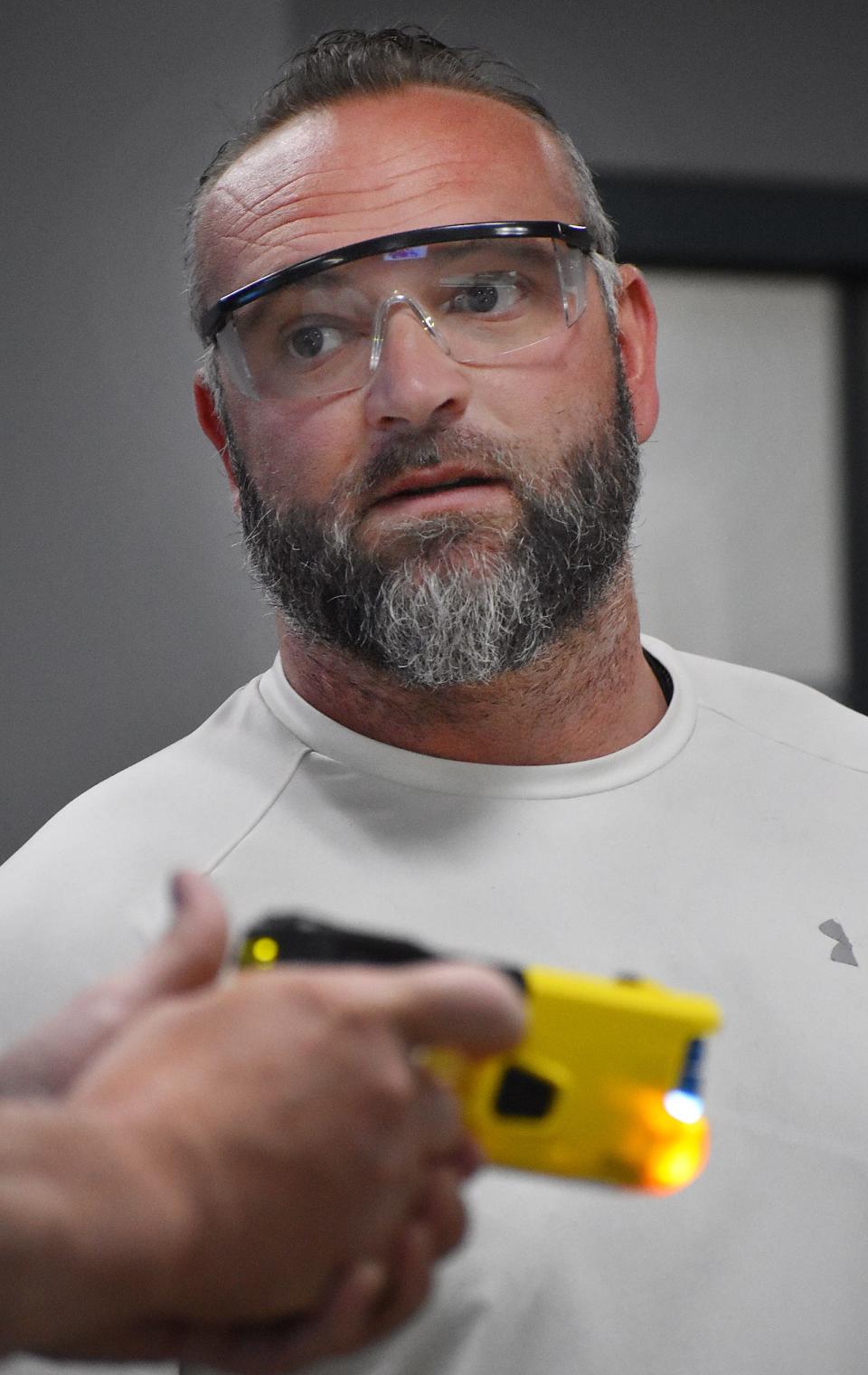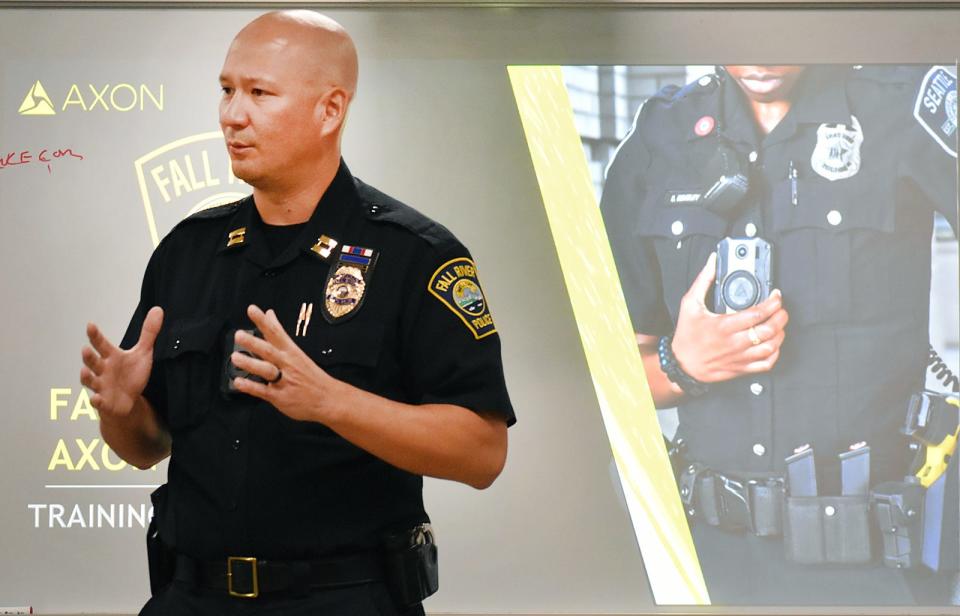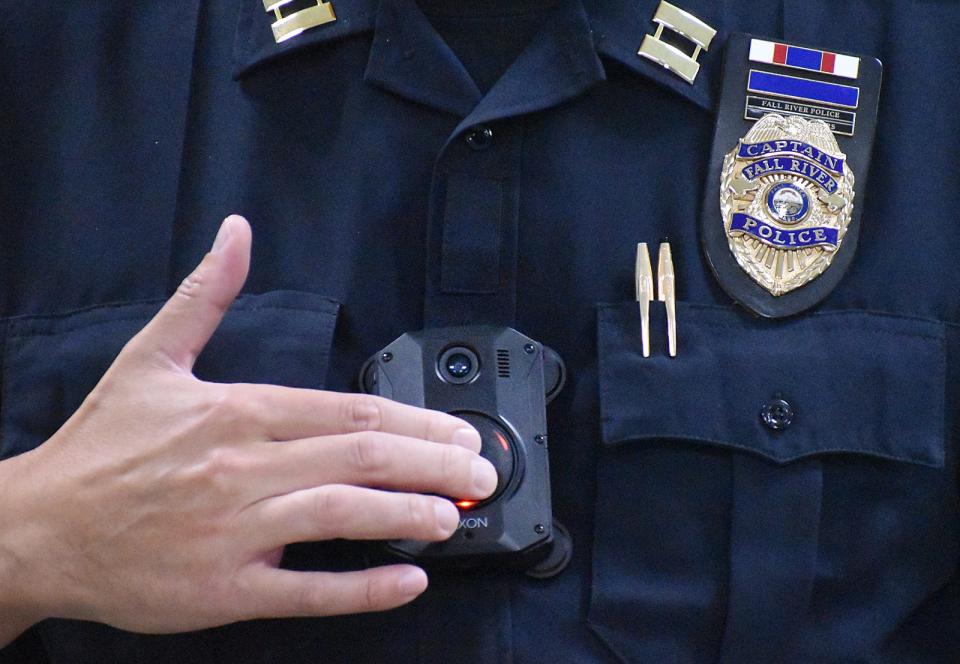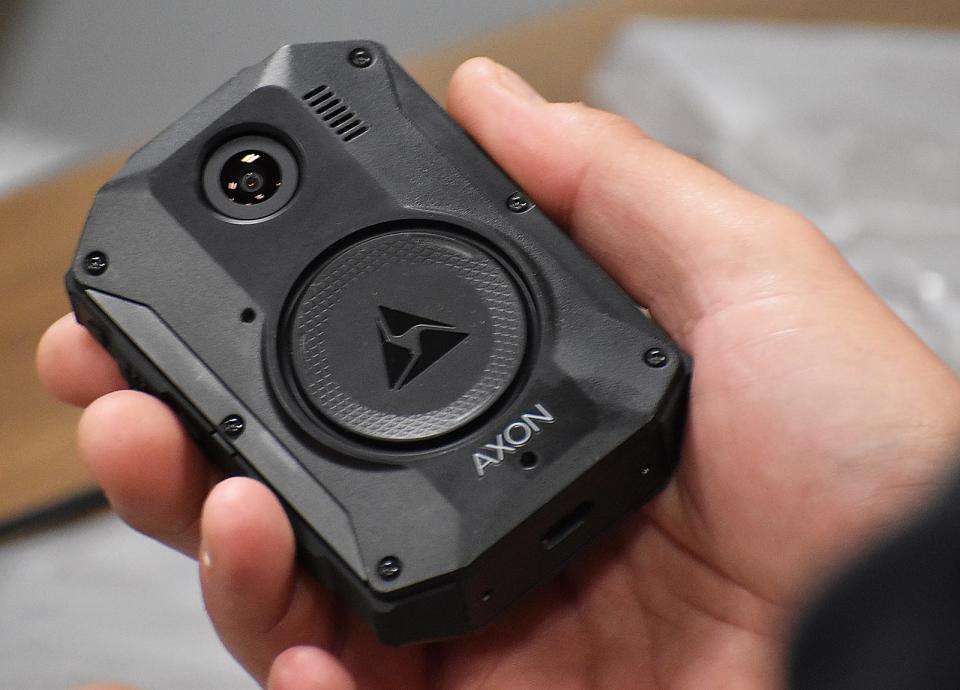State-of-the-art crime fighting technology to hit Fall River's streets by June
FALL RIVER — The city has made a $1.5 million investment in crime fighting tools, and soon all Fall River police officers who hit the city streets everyday will be outfitted with state-of-the-art Axon body-worn cameras, stun guns and signal sidearms.
On May 12, 33 police officers reported for training on the new gear, making it about two-thirds of the department fully trained on the equipment.
Popping sounds followed by rapid crackling noises from the electric stun guns could be heard as officers lined up to shoot at the paper figure of a “suspect.”
The police department’s new stun guns now have two cartridges compared to the old Tasers that only had one cartridge. The new technology gives the police officers the ability to deploy the stun guns when a suspect is close or at a greater distance by adjusting the spread of the electrified darts shot out of the device.
“The most effective spread is one above the belt line and one below the below it to get full muscular contact,” said Captain James T. Hoar, who oversees the training.
A quick hand twist of the device lets police officers jockey between the two cartridges depending on the distance between them and the suspect about to get “tased.”
Officers get shot with stun gun
The new stun guns activate the charge once the anchors contact the body of the suspect, firing an electric shock for five seconds before the device automatically stops. Hoar said the stun gun also has the technology to “read” a person's body mass, sending the appropriate voltage to the suspect.

body-worn cameras funding ARPA Fall River City Council vote supports police use of body-worn cameras
Fall River police train on stun gun
After the trainees took turns on the paper image of a suspect, Officer Matt Gauvin donned a thick suit and was shot in the back with the stun gun by his fellow officers after they give a warning of “tase, tase” before deploying the electrified probes.

Then two of the officers in training were volunteered to get the full experience of getting tased.
First up was Sgt. Frank Andrade, who somehow managed to stay up on his two legs while two other officers held him under his arms.

“That was awful,” Andrade said after the other police officers gave him a round of applause.
Police officer Jen Deleon did not exactly raise her hand when they were looking for another volunteer but didn’t hesitate when her name was called. After being shot with the electrodes in her lower back and buttocks, Deleon struggled to stay on her feet until the officers guided her to the floor.
What's the delay Fall River police union isn't delaying a body-cam program.
How do the police body-worn cameras work?
Fall River Police Chief Paul Gauvin called the new technology “fantastic; it's unbelievable.”
When an officer is fitted with a body-worn camera, if a stun gun is deployed, it automatically turns on the camera device, as well as the body worn cameras of any other police wearing on as well in a 50-foot radius using Bluetooth technology.
Each officer was fitted with a device in their gun holsters that when activated, also turns on the body-worn camera when they draw their guns, called a signal sidearm.
Gauvin said the new technology now in the hands of his officers will accomplish a few goals.

“Number one, less complaints against police officers. Less injuries reported and less officers getting hurt,” said Gauvin. “It will be a cost savings for us with less lawsuits and less use of force incidents.”
“Any time we can remove human error, that’s important,” said Gauvin.
How were the body-worn cameras funded?
The Fall River police department’s body-worn camera program was funded by money from the federal government’s American Rescue Protection Act contributions to the city.
Last June, the department launched a pilot program where seven patrol officers were trained and outfitted with the cameras.
During the May 12 training, the officers were able to see a real-life example of how the cameras can protect them from false complaints.
A Fall River police sergeant who is already using a body-worn camera recorded an exchange between himself and a man who was screaming at him because he was parked on the street in a parking space.
The sergeant warns the man that he’s being recorded, but it doesn’t stop the man’s behavior, and at one point is seen claiming that the officer used foul language toward him, which he is not heard saying.
Gauvin said the man is known to police for filing false accusations at police, but that day he never lodged a complaint because the exchange was fully recorded, including in real time producing text of the conversations the body-camera picks up with its four microphones.
“So, these devices are going to help us more than hurt us and we’re already seeing that out there,” said Hoar during the body-camera training. “We’re seeing that the accountability piece cuts both ways. It keeps us on our toes, it keeps our level of service at a good level, and also keeps the public honest with us.”
Gauvin said the new technology will be hitting the streets by June 1.
This article originally appeared on The Herald News: Fall River police get state-of-the-art crime fighting technology

